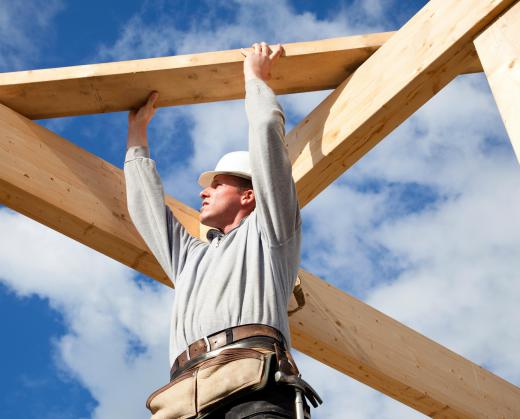Cordwood construction is a home-building technique that uses a combination of wood and masonry mortar. It is often known as stackwall or stockwood construction, and has been practiced for centuries, particularly in colder climates. Rather than using full timbers or steel framing, cordwood homes are made from shorter sections of wood, similar to firewood. This technique is associated with a number of environmental benefits that have helped increase its popularity over time, even as newer construction materials have been introduced.
The walls used in cordwood construction generally range from 12 to 36 inches (30.5 to 91.4 cm) in thickness. Layers of debarked wooden logs are stacked to form the walls, with the ends of each log facing out towards the exterior surface of the wall. They are held together with traditional mortar mix made from Portland cement, lime, sand and water. Some larger cordwood homes may feature a post-and-beam frame, while others use only cordwood and mortar. The logs are often arranged so that they project from the face of the mortar by a few inches, providing a rustic, traditional log cabin look.

There are two basic techniques used to insulate cordwood homes. The most common is a through-wall method, where insulation is added directly to the mortar in the form of sawdust or shredded newspaper. Some builders may also use mortar/insulation/mortar (MIM) cordwood construction. Using the MIM technique, the logs are stacked normally, but mortar is place only at either end of the log. As the wall is built, loose-fill insulation is placed between the logs and layers of mortar.
Cordwood construction offers many different benefits to homeowners. It is easy and quick to install, and is much more cost-effective than traditional wood or steel framing. Walls made from cordwood are flexible and can be formed into any desired shape or design. The thickness of these walls provides a high level of thermal resistance, especially when proper insulation is added. This can help keep the home comfortable while keeping heating and cooling bills in check.
One of the primary benefits to cordwood construction is its level of sustainability. The wood used to build these homes can come from virtually any source. It may consist of scrap lumber, fire-damaged wood, or materials leftover from other projects. The superior insulation offered by this construction technique helps to reduce energy used for heating and cooling, which can lead to reduced emissions and lower levels of greenhouse gases.
